AFP|
Updated:
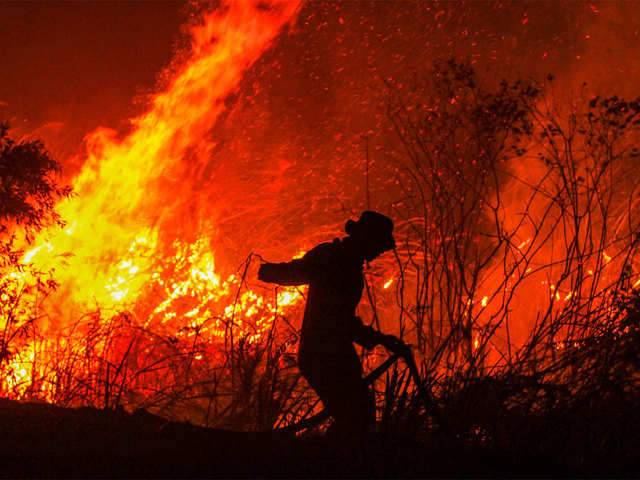
1/6
Amazon to Indonesia
With fierce blazes raging in jungles from the Amazon to Indonesia, concerns are mounting about the impact as rainforests play a vital role in protecting the planet against global warming.
The latest serious outbreak is in Indonesia, where smog-belching fires started to clear land for agriculture are burning out of control, blanketing the region in toxic smog.
AFP
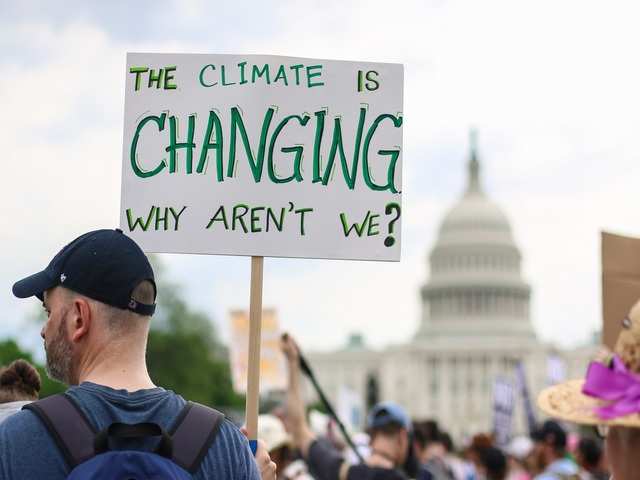
2/6
Natural buffer against climate change
Mankind's reliance on fossil fuels usually receives much of the blame for climate change but scientists say that deforestation has also played a big role.
Forests are natural buffers against climate change, as they suck greenhouse gas carbon dioxide out of the atmosphere. But forests worldwide have been logged on an industrial-scale over the decades for timber and to make way for agricultural plantations. Burning of large expanses of trees also releases huge amounts of carbon dioxide.
Forests are natural buffers against climate change, as they suck greenhouse gas carbon dioxide out of the atmosphere. But forests worldwide have been logged on an industrial-scale over the decades for timber and to make way for agricultural plantations. Burning of large expanses of trees also releases huge amounts of carbon dioxide.
Shutterstock.com
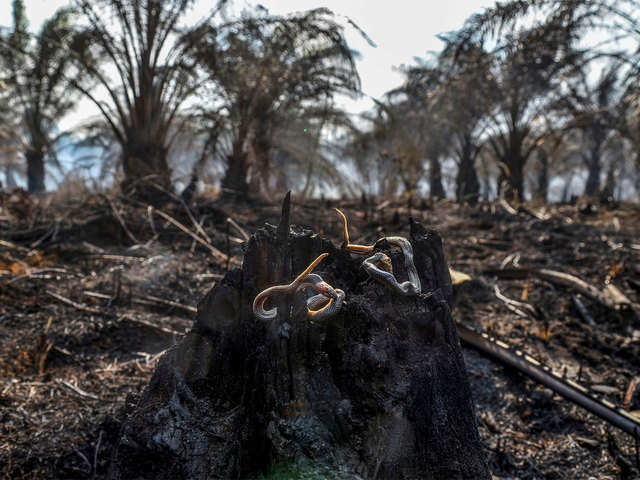
3/6
Worst fire in two decades
At the peak of Indonesia's 2015 forest fires - the worst in the country for two decades - the country spewed more greenhouse gases into the atmosphere each day than all US economic activity for the same period, according to environmental watchdog the World Resources Institute (WRI).
Greenpeace estimates that in the past 50 years, more than 74 million hectares (182 million acres) of Indonesia's biodiverse rainforests - an area twice the size of Germany have been chopped down, degraded or burned. They have often been destroyed to make way for plantations for the lucrative palm oil and pulpwood industries, particularly on Sumatra and Borneo islands, with fires often started illegally to clear land.
In pic - Baby snakes killed in a peatland forest fire are pictured at a palm oil plantation.
Greenpeace estimates that in the past 50 years, more than 74 million hectares (182 million acres) of Indonesia's biodiverse rainforests - an area twice the size of Germany have been chopped down, degraded or burned. They have often been destroyed to make way for plantations for the lucrative palm oil and pulpwood industries, particularly on Sumatra and Borneo islands, with fires often started illegally to clear land.
In pic - Baby snakes killed in a peatland forest fire are pictured at a palm oil plantation.
AFP
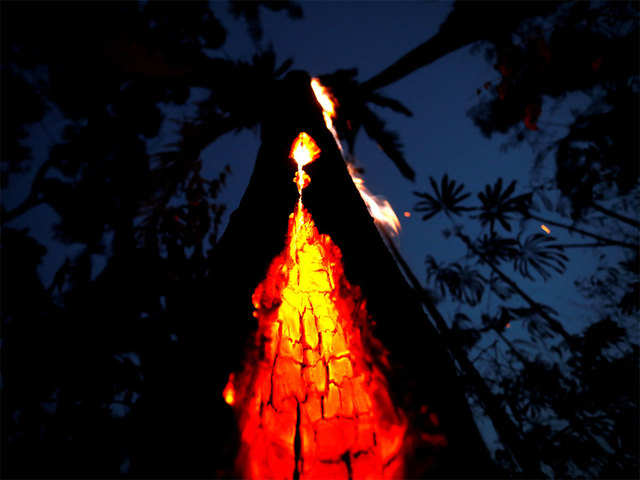
4/6
Fire - cheap way to clear land?
Indonesia suffers forest fires annually but this year's appear to be the worst since 2015. The country's disaster agency estimates that from January to August, about 328,000 hectares (810,000 acres) of land was burned. The country has however managed to slow the rate of deforestation in recent years.
Farmers and plantation owners are usually blamed for starting the fires as a quick and cheap way to clear land. Major companies typically deny starting blazes and instead point to small-scale farmers and villagers. The most serious fires occur in peatlands, which are highly combustible when drained of water to be converted into plantations. The situation this year has been worsened by drier weather in Indonesia.
Authorities have deployed thousands of security forces to battle the blazes but most believe only the start of the rainy season - usually in October - will douse them. After the 2015 fires, President Joko Widodo's government took steps to prevent a repeat of the catastrophe.
Farmers and plantation owners are usually blamed for starting the fires as a quick and cheap way to clear land. Major companies typically deny starting blazes and instead point to small-scale farmers and villagers. The most serious fires occur in peatlands, which are highly combustible when drained of water to be converted into plantations. The situation this year has been worsened by drier weather in Indonesia.
Authorities have deployed thousands of security forces to battle the blazes but most believe only the start of the rainy season - usually in October - will douse them. After the 2015 fires, President Joko Widodo's government took steps to prevent a repeat of the catastrophe.
Reuters
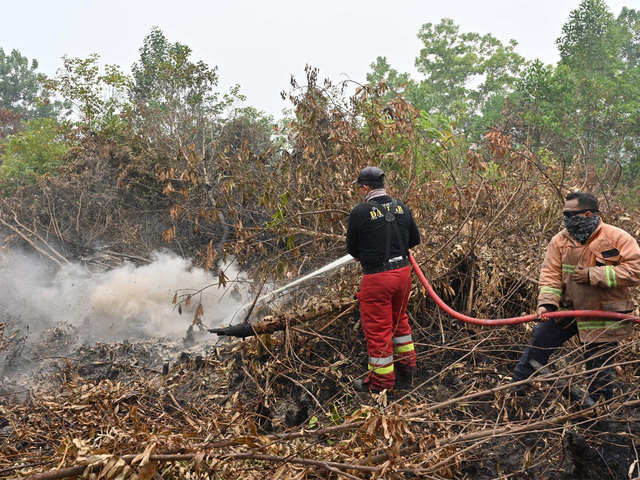
5/6
Hunt for the culprits
Authorities have tried to improve law enforcement to catch those responsible for illegal burning and set up an agency to restore degraded peatlands, which should make them less vulnerable to being set ablaze.
The fires in Indonesia are far smaller than those in the Amazon, the world's biggest rainforest. Wildfires in Bolivia have torched two million hectares (4.9 million acres) of forest and grassland since August while in Brazil 88,816 fires were recorded from January to the end of August, over half of them in the rainforest.
The fires in Indonesia are far smaller than those in the Amazon, the world's biggest rainforest. Wildfires in Bolivia have torched two million hectares (4.9 million acres) of forest and grassland since August while in Brazil 88,816 fires were recorded from January to the end of August, over half of them in the rainforest.
AFP
6/6
Hard to limit temperature rise
Increasing outbreaks of forest fires worldwide creates more greenhouse gas emissions and makes it harder to limit temperature rises, experts say.
The landmark Paris climate deal requires all countries to devise plans to keep temperature increases to "well below" two degrees Celsius (3.6 degrees Fahrenheit) above pre-industrial levels. It calls for rises to be limited to within a safer limit of 1.5C - but the UN's Intergovernmental Panel for Climate Change warned last year that at current levels of greenhouse gas emissions, we could pass this marker as early as 2030.
The landmark Paris climate deal requires all countries to devise plans to keep temperature increases to "well below" two degrees Celsius (3.6 degrees Fahrenheit) above pre-industrial levels. It calls for rises to be limited to within a safer limit of 1.5C - but the UN's Intergovernmental Panel for Climate Change warned last year that at current levels of greenhouse gas emissions, we could pass this marker as early as 2030.
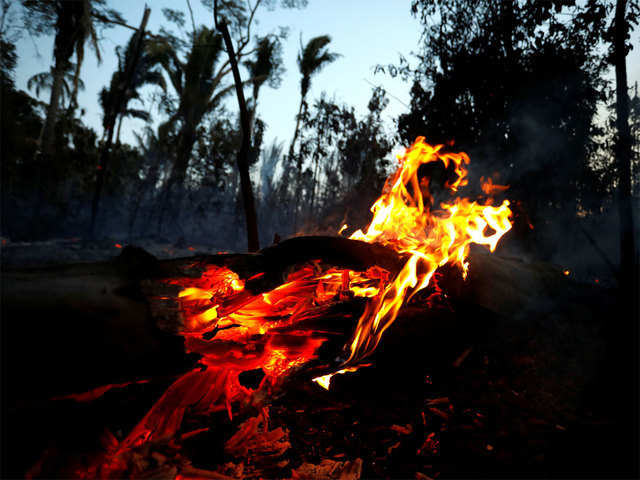
No comments:
Post a Comment